Dive Details
Location
Date
Saturday 20 December 2014
Time
3:20pm - 4:34pm
Details
Conditions at The Leap were so much better than they had been on Monday: there was much less swell although the surface water did not look all that clear. I was able to jump in from the low platform and descend. The visibility at 5 metres was actually pretty good. As I swam at 60° to the amphitheatre visibility improved and was around 10 metres at the sand line.
I swam to the white pygmy seahorse first and he was in his usual spot. He's looking quite pregnant. He's been around now since at least 5 October and it will be interesting if he's still around after giving birth.
I went to the rock with the pink male pygmy pipehorse has been but I was not able to find it after searching carefully for 5 minutes. I looked around some of the other rocks for pygmy pipehorses but did not find any. I had another look for the pink male but still couldn't find it.
I swam on towards Seahorse Rock. On the way I found a male weedy seadragon with a lot of eggs. I have seen this male many times since March but when I last saw him 3 weeks ago he didn't have any eggs.
"Rosie", the pot-bellied seahorse, was on her usual rock behind Seahorse Rock. We first saw her in December 2012 so she's been around now for over 2 years.
I continued on to the next seahorses and found "Southern Cross" and "Pierre". "Pierre" was still on the same sponge he's been on for the last couple of weeks.
I swam on to Seadragon Alley where I found 3 weedy seadragons. The first I have seem many times since at last December last year. The other two were males, one I had not seen before which had the remnants of eggs and the other I first saw on Monday with a small batch of eggs.
After swimming past Seadragon Alley I headed up the "ramp" to the top of the reef. I did not see anything of note and part way along ascended to the boulders and did my safety stop as I swam to the Plesiastrea colonies. At around 5 metres the visibility dropped to around 3 metres. After my safety stop I ascended and exited at The Steps.
Seas
Slight
Visibility
3-10 metres
Duration
73 minutes
Maximum depth
21.3 m
Average depth
16.2 m
Water temperature
19.1°C
Dive Profile from Citizen Hyper Aqualand
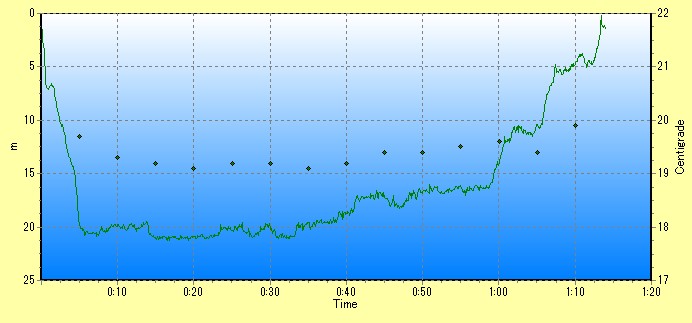
Tides at Botany Bay AEDT
Note that tides at dive site may vary from above location.
Low
1:03am
0.44m
High
7:38am
1.72m
Low
2:15pm
0.37m
High
8:04pm
1.36m
Camera gear
Camera
Nikon D7000
Lens
Nikon AF Micro-Nikkor 60mm f/2.8D
Housing
Ikelite 6801.70
Lens port
Ikelite Flat Port 5502.41
Strobe
2 x Ikelite SubStrobe DS161
Photographs
Depth information, where present, indicates the depth of the camera when the photograph was taken and can be used to approximate the depth of the subject.

Male Sydney pygmy pipehorse, Idiotropiscis lumnitzeri. 20.6 m.
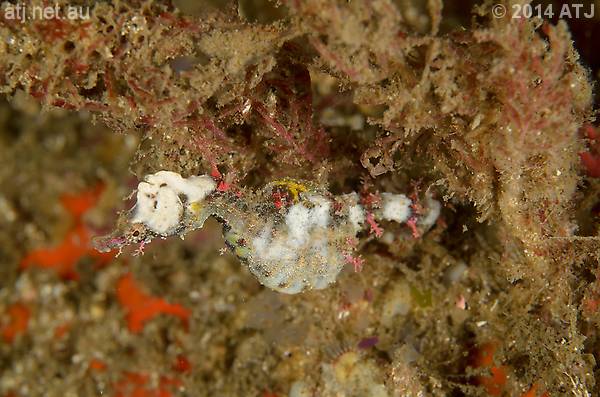
Male Sydney pygmy pipehorse, Idiotropiscis lumnitzeri. 20.5 m.
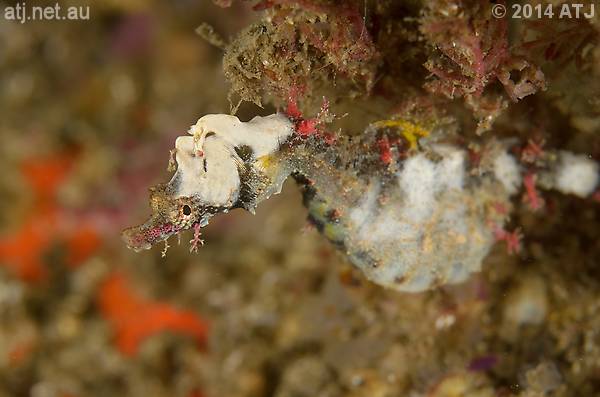
Male Sydney pygmy pipehorse, Idiotropiscis lumnitzeri. 20.6 m.

Nudibranch, Chromodoris splendida. 20 m.
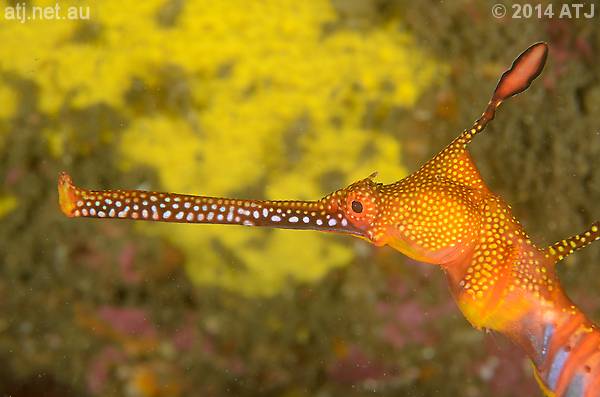
Male weedy seadragon, Phyllopteryx taeniolatus. 20.9 m.
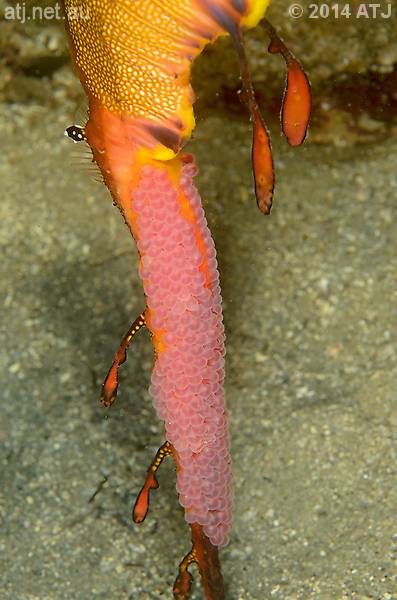
Eggs on the tail of a male weedy seadragon, Phyllopteryx taeniolatus. 20.9 m.
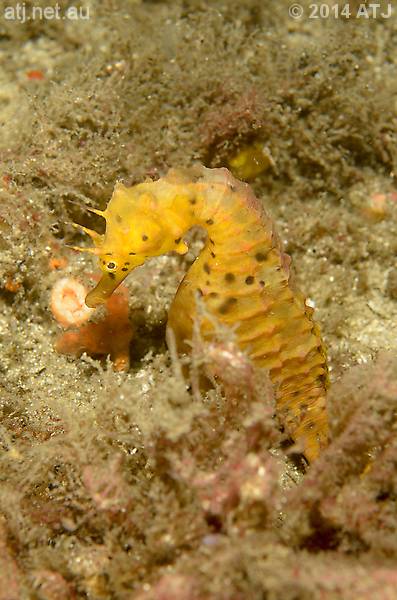
Female pot-bellied seahorse, Hippocampus abdominalis, ("Rosie"). 19.7 m.

Female pot-bellied seahorse, Hippocampus abdominalis, ("Southern Cross"). 17.3 m.
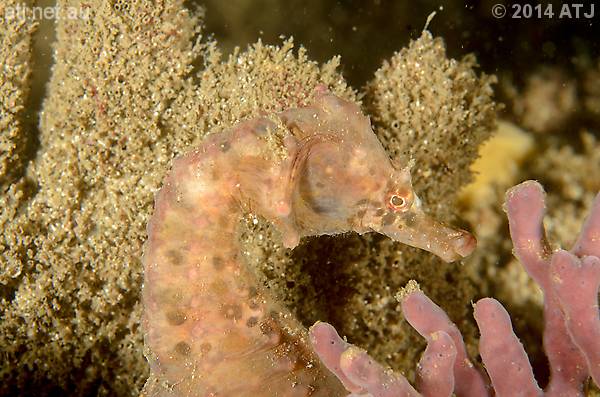
Male pot-bellied seahorse, Hippocampus abdominalis, ("Pierre"). 17.1 m.

Female pot-bellied seahorse, Hippocampus abdominalis, ("Southern Cross"). 17.3 m.

Reaper cuttlefish, Sepia mestus. 17.8 m.

Reaper cuttlefish, Sepia mestus. 18.1 m.

Weedy seadragon, Phyllopteryx taeniolatus. 16.8 m.
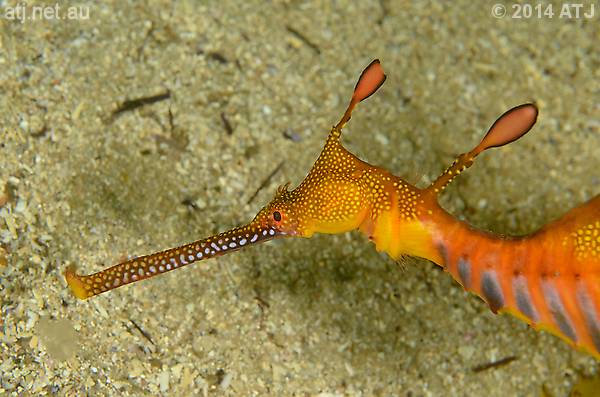
Weedy seadragon, Phyllopteryx taeniolatus. 16.7 m.
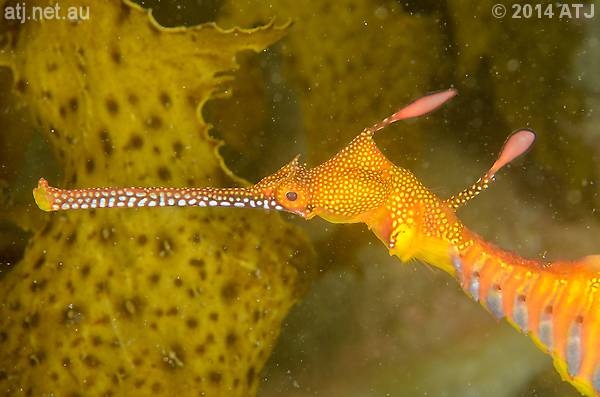
Male weedy seadragon, Phyllopteryx taeniolatus. 16.7 m.

Remnants of eggs on the tail of a male weedy seadragon, Phyllopteryx taeniolatus. 16.6 m.
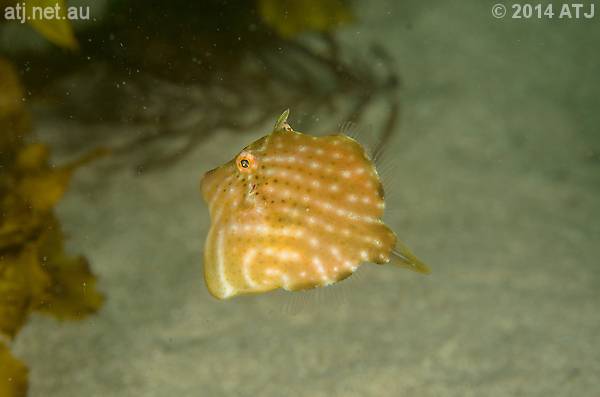
Pygmy leatherjacket, Brachaluteres jacksonianus. 16.7 m.
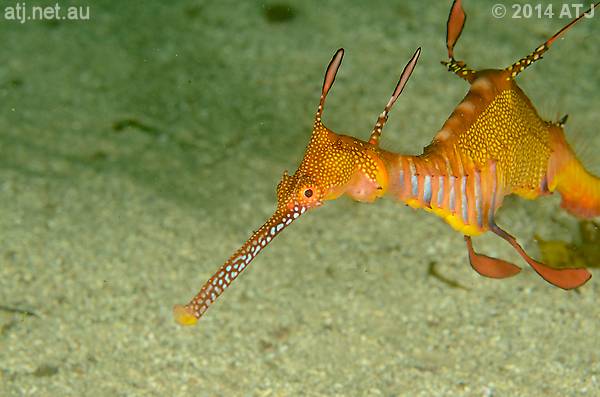
Male weedy seadragon, Phyllopteryx taeniolatus. 16.5 m.
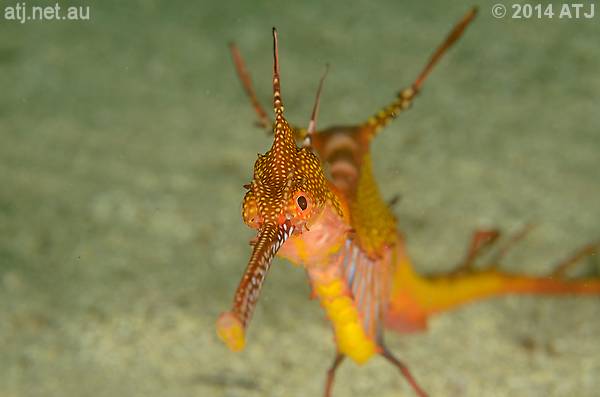
Male weedy seadragon, Phyllopteryx taeniolatus. 16.4 m.

Male weedy seadragon, Phyllopteryx taeniolatus. 16.5 m.
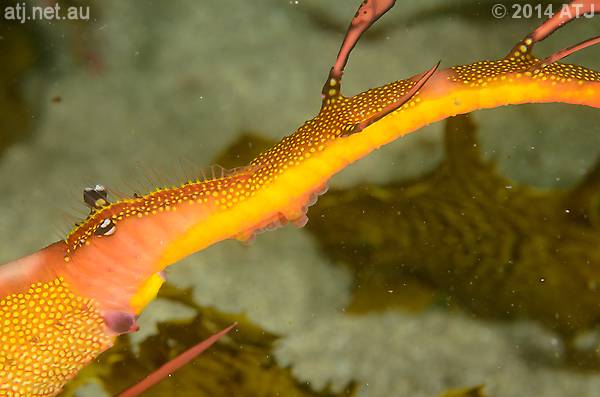
Eggs on the tail of a male weedy seadragon, Phyllopteryx taeniolatus. 16.1 m.
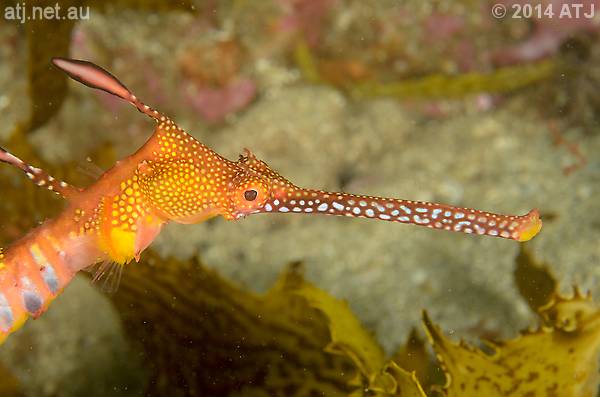
Male weedy seadragon, Phyllopteryx taeniolatus. 16.3 m.
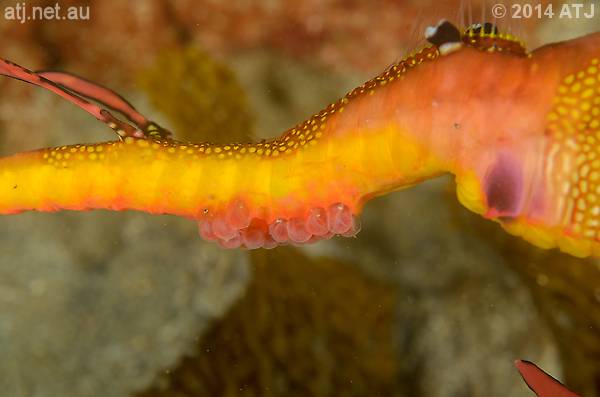
Eggs on the tail of a male weedy seadragon, Phyllopteryx taeniolatus. 16.4 m.